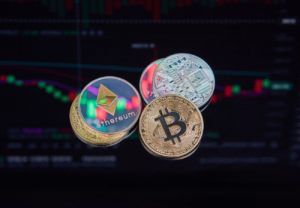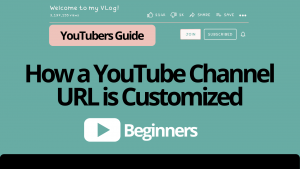All thanks to the availability of various services on Social Media, a majority of students sometimes use dissertation writing services and ask them “write a dissertation for me” in groups. Allowing them to focus on other academic pursuits or personal interests. It also improves alertness in the classroom due to an array of references that serves as an avenue for new skills.
So, it’s clear that Social Media has become an integral part of modern society, and its use among students is ubiquitous. But, while it offers several benefits for students, like improved communication and networking opportunities and enhanced learning experiences through online resource platforms, there are also some significant drawbacks that cannot be ignored.
Not to mention, it continues to play an increasingly prominent role in students’ lives, and it is crucial to examine both the potential benefits and drawbacks of its use. In this article, we will explore the pros and cons of social media for students in general. While, at the same time, trying to offer a balanced perspective on its impact on their personal and academic lives.
So, do you think that social media is a must-have tool for students and academic learners? In what ways does it help? What are some of the risks? Well, by providing a nuanced view of social media use, we hope to encourage students to engage with this tool in a responsible and mindful way. That being said, let’s have a look at the significance of social media to learners.
What Are The Benefits Of Social Media For Students In General?
Regardless of how much it’s criticized for the effects it has on students, it holds much more value than all other traditional methods combined. More so, when it comes to bringing opportunities for learning new things and facilitating interaction. While also, allowing teachers to start making better judgments given the new communication skills with their students.
But, a balanced perspective on the use of social media for students is necessary. Eventually, which acknowledges the potential benefits and drawbacks of social media use and emphasizes responsible and mindful use. This involves being aware of the time spent on social media, prioritizing real-life interactions, protecting one’s privacy, and being vigilant at all times.
More so, being at the forefront to be aware and know about the content being consumed by these youngsters, especially, academic learners to be precise. It’s also important to seek support when dealing with the negative impacts of social media, such as seeking counseling or using proofreading tools to reduce stress and anxiety. Today, social media is a must-have tool.
Through social media networks, students can create new friendships, express their views and opinions, and even create ‘new identities’. Not forgetting, social media also exposes students to a whole new way of learning. Research has shown that students who are judicious and frequent social media users are more innovative and exhibit better memory. What’s more?
1. Unified Communications
Through social media networks, students can create new friendships, express their views and opinions, and even create ‘new identities’. Not forgetting, social media also exposes students to a whole new way of learning. Research has shown that students who are judicious and frequent users of social media platforms are more innovative and exhibit better memory.
In the same fashion, Livestreaming is also a very important element to consider here. The act of streaming recorded and broadcasted media simultaneously over the internet in real-time or near real-time. It’s often referred to simply as streaming. Non-live media such as video-on-demand, vlogs, and YouTube videos are technically streamed, but not live-streamed.
Live streaming their classroom sessions and lessons means that teachers can continue to provide classes to their students when they can’t meet in person. Whereby, it gives more flexibility to both teachers and students. After all, the real-time nature of live video also means your virtual classroom can just be as interactive and as engaging as your in-person nature.
2. Seamless Integration
In today’s digital age, students have unprecedented access to social media platforms that offer a range of benefits for personal and academic development. For instance, social media provides a convenient and efficient means of communication and networking. Whilst, allowing students to connect with peers, educators, and professionals from all over the world.
Social Media is a great tool to integrate other existing cultures and perspectives, which can provide valuable insights into current events and social issues. Additionally, just as we mentioned, it’s clear that Social Media also offers opportunities for personal and professional development. Many applications provide hubs for skill-building, career advice, and job opportunities.
From online courses, and study groups, to educational podcasts, social media offers an abundance of opportunities for students to expand their knowledge and skills. Moreover, it has the potential to expose students to diverse perspectives and global issues that they may not have encountered otherwise. This can help foster a deeper understanding of different niches.
3. Effective Collaboration
Over many years social media has gained superior credibility as a trusted source of information. A platform where organizations can interact with their global audiences. By using social media, teachers can improve their technological ability & students’ involvement in their studies. It also provides a good sense of collaboration through teamwork while in the classroom.
According to Holkar Educational Trust, social media plays an important role in every student’s life. It is often easier and more convenient to access information, provide information and communicate via Social Media. Tutors and students can be connected to each other and can make good use of these platforms for the benefit of their learning and teaching.
What’s more, when it comes to sharing data materials, credible information, and skills, social media provides a platform where one can share their knowledge and gain credibility in their chosen field(s) or specialization(s). Similarly, they can also acquire information and insights from other likely-minded students within an online community with just a single click.
4. Unlimited Information
Another important key point; is that social media is an excellent and free medium for the end user! This means, that it can not only be used to communicate, but it is also an outstanding device that’s driven by technology. Specifically, to help promote things such as events, new courses, and various advanced research. Thus, it’s used to enhance improvement in learning.
At all costs, sharing information and backlinks to other educational websites has now become super easy for students and learners. Simply, this is because they easily and quickly share pieces of information with their friends, classmates, and other connections. Much of the time they are connected to the internet through mobile phones, laptops, PCs, tablets, etc.
In addition to transmitting views, opinions, tips, study materials, school projects, and other collections of useful reading stuff to each other. With this, they can exchange helpful information about their exams as well as classroom work. Simply put, the advancement of technology is a boon for humans but it still depends on how you use it.
Social Media plays a crucial role in a student’s life because of its informative and interactive nature. Therefore, students deserve the best social media learning therapy. Uniquely, this has now changed the world of social interaction greatly.
5. Digitized Learning
It’s, important to realize, that many schools, colleges, and universities alike have already begun the process of facilitating digital learning. Especially, by interconnecting with a large number of students through the means of social media networks. For example, Facebook, Twitter, and YouTube channels can be utilized to impart and communicate school news.
They can also be used to rely upon educational info, make declarations, and provide students with more valuable data. As a result, this creates involvement between the school and students, which help handle several student-related issues through group discussions. Still, social platforms are a cost-effective way of communication without having any geographical limitations.
An online community may allow a student to share their knowledge on a social media platform (say a Facebook Page or Facebook Group for that matter). As well as gain some insights about other subjects from the same medium. With such a hub, Frequently Asked Questions (FAQs) can always be posted by trainers with a room for students to give their answers.
What Are The Realistic Drawbacks Of Social Media For Students?
Social Media has revolutionized the way we communicate and connect with others, but it has also come with its fair share of drawbacks and disadvantages. While social media can be a useful tool for staying connected with friends and family, promoting one’s work or projects, and accessing a wide range of information and resources, it can also have drawbacks.
Mark you, it has become an integral part of modern society, with billions of people around the world. Using platforms like Facebook, and TikTok to connect with others, share information and experiences, and access a wide range of resources. So, while it has its fair share of benefits and advantages, it also has its drawbacks and disadvantages, particularly for students.
Meaning, that though a great tool, social media has been associated with a range of negative impacts on students. One major drawback is the potential for distraction and decreased productivity. Students may become consumed by social media and spend excessive amounts of time scrolling through their feeds, checking notifications, and responding to messages.
This can interfere with their ability to focus on academic tasks and lead to lower grades and reduced academic performance. In addition, social media has been linked to negative impacts on mental health and well-being among students. With that in mind, let’s now have a look at the overall list of the key drawbacks that social media for students brings in general.
The uppermost drawbacks to consider include:
- Distracted performance and reduced productivity
- A feeling of isolation and some form of loneliness
- Cyberbullying and other related online dangers
- Loss of personal data information privacy to hackers
- Misinformation, misinterpretation, and fake news
- Excessive use may lead to addiction and depression
- Foster comparison and a negative self-image for students
- Nomophobia after being detached from connectivity
- It can become a time-waster for academic learners
- Some negative effects on the mental health of students
- Personal safety and security compromise for students
Must be remembered, exposure to negative social comparison, cyberbullying, and online harassment can contribute to feelings of low esteem exploitation. Essentially, this may lead to anxiety, depression, and a feeling of self-harm. Furthermore, social media use has been shown to disrupt sleep patterns, which can have further negative effects on mental and physical health.
A Balanced Perspective For Academic Learners To Note
Notably, social media helps promote self-directed learning, which prepares students to search for answers and make decisions independently. When reinforced in a classroom setting, these social skills can be guided and refined to produce better learning outcomes and critical awareness. Coupled with a set of few applications made for creating as well as sharing content.
But still, it is important to have a balanced perspective on the use of social media by students. One way to achieve this balance is by acknowledging the potential benefits and drawbacks of social media use. Students must be aware that it can have negative impacts on their mental health and well-being. Whilst, exposing them to inappropriate or harmful content.
This may also pose some privacy and safety concerns, thus responsible and mindful use of social media is crucial. Strategies such as limiting its use, taking breaks from social media, and utilizing apps for productivity can help minimize the negative impacts of social media on students. It is essential to recognize that social media can be both helpful and harmful.
As such, students must exercise caution and discretion while using it. By the same token, it’s also important to seek support when dealing with the negative impacts of social media. Considerably, such as seeking counseling or using proofreading tools to reduce stress and anxiety. Both parents and teachers should also have a unified channel to solve any issues.
The Right Social Media Tools To Drive Digitized Learning
Given the rise of new technological innovations, there are an array of tools that can help drive your digitized learning system. Connecting with each other comes to us more easily now. We can just tap away on a keyboard and chat with a person who lives over 3000 miles away. Finding information knows no boundaries with Google on every computer in the world.
As educators, this means access to more, faster, which is thrilling and mindboggling. However, it can also be frustrating and confusing with so much to choose from. How do you know which platform is the best for your goals? Which social media organization has the best resources and community? Which one would help you communicate better with your students?
All of these questions flutter through our minds as our eyes wander through the gallons of information we search through. So, to simplify this daunting task for teachers, the following list consists of the best social media for teachers. For beginners, you can opt for a powerful social networking manager, HootSuite that makes it easier to access various forms of social media.
And then, it helps you to analyze how valuable the use of one media is over another. Sometimes getting caught up in the social media craze can be overwhelming so using HootSuite helps make sense of all the media at the same time.
Other Tools:
- edConnectr
- Edmodo
- Sgrouples
- RebelMouse
- TeacherTube
- Academia
- LabRoots
- ResearchGate
- LabforCulture
- CultureInside
- GogoYoko
- TedEd
The above list is not all! There are a bunch of other useful freemium tools for both teachers and students alike to utilize fully. You just need to search online to get a variety of credible lists that will guide you toward landing on the best application or platform as per your unique needs. Sometimes, it’s good a try a variety of them first until you land on the best one.
For example, you may consider a video-sharing website like DailyMotion that adds an edge to social media by presenting users with a “news” feed of the latest videos. Teachers can use it for themselves in order to keep up-to-date on bizarre and informative social networking. And also, for posting their own videos or sharing some of the unique videos available there.
Bear in mind, that it’s also wise not to forget the power of the topmost social media networking websites too. Such as Facebook, Twitter, LinkedIn, Pinterest, Instagram, Vimeo, YouTube, Skype, and the like. Still, with so many themes to choose from, WordPress has also become a popular way for teachers to set up a website channel to start lessons with their students.
Summary Notes:
On one hand, social media has become an integral part of modern society, and its impact on students is undeniable. Basically, we have discussed the potential benefits and drawbacks of social media use among students. On the one hand, we can say that social media offers improved communication and networking opportunities for all those involved, especially, academics.
It also provides enhanced learning experiences through online resources and platforms. As well as increased exposure to diverse perspectives and global issues, and opportunities for personal and professional development. One downside is that it may also lead to distraction and decreased productivity, negative impacts on mental health and well-being, and the like.
Equally important, another downside is that it may also lead to unfiltered exposure — given all sorts of inappropriate or harmful content it carries with it. Plus, it may also bring with it other personal information and data-related security issues — in terms of privacy and safety concerns. Thus, a balanced user perspective in regard to social media for students is necessary.
Eventually, which acknowledges the potential benefits and drawbacks of social media use and emphasizes responsible and mindful use. This involves being aware of the time spent on social media, prioritizing real-life interactions, protecting one’s privacy, and being vigilant at all times. More so, by being always aware and knowledgeable about the content they consume.
Other More Related Resource Reference Topics:
- Online Learning | The Benefits & Challenges You Should Know
- The Online Learning Impacts On Parent-Teacher Communication
- How To Build A Leading eLearning Platform In A Few Simple Steps
- The Best Education System In The World | #7 Top Ranking Nations
- Social Media Marketing (SMM) | 10 Basic Steps To Do It Right
In conclusion, students need to use social media responsibly and mindfully to harness its potential benefits while minimizing its drawbacks. It is our collective responsibility to ensure that students are aware of the implications of social media use and are equipped with the necessary tools and strategies to navigate it effectively. Kindly Consult Us to get more support from us.




